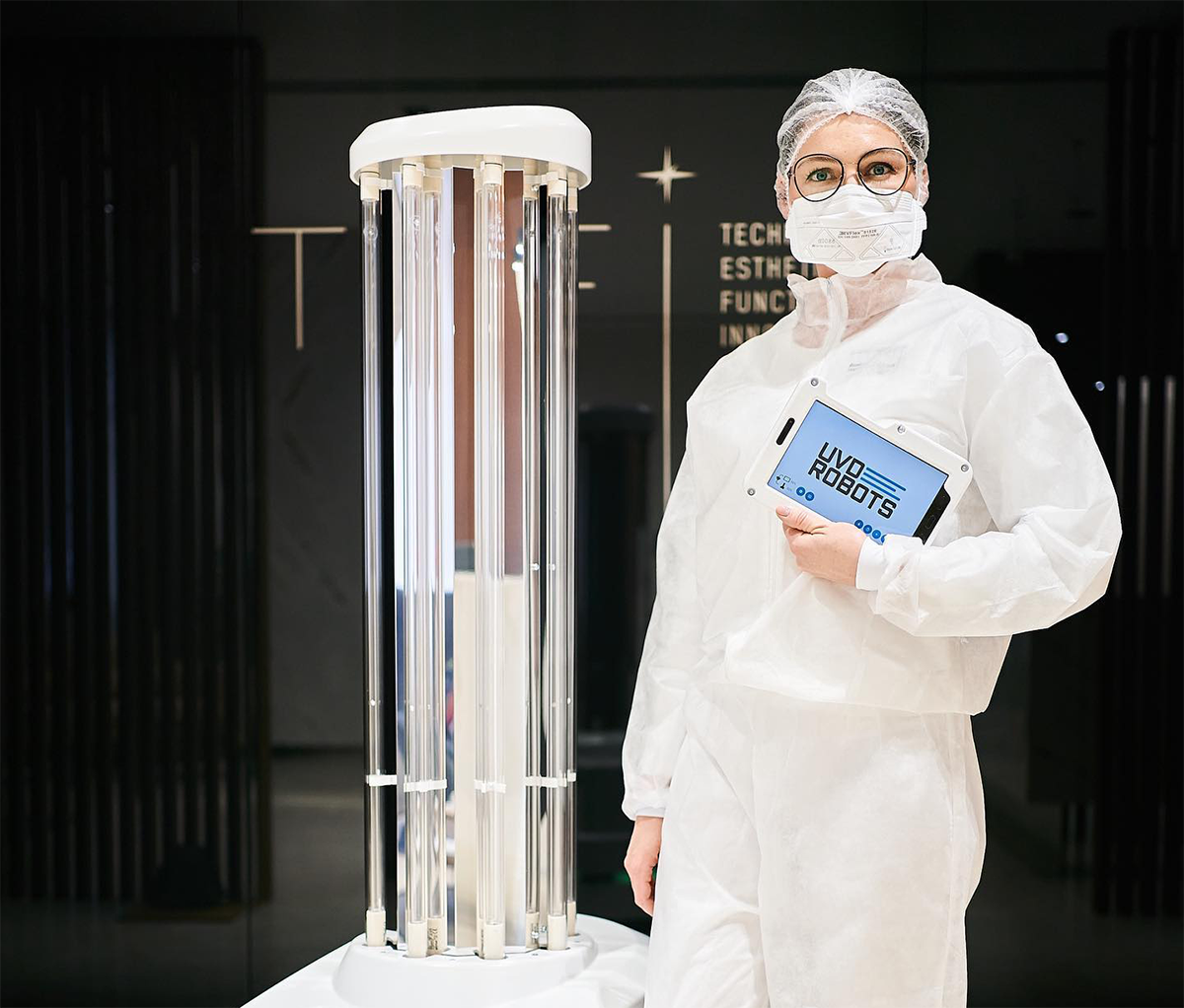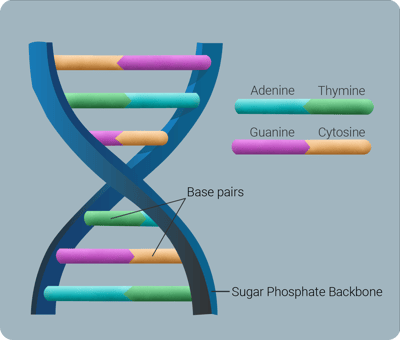Title
Content
Title
Content

DNA, the fundamental thread in the tapestry of existence, takes center stage as we commemorate DNA Day. As we celebrate DNA Day, we pay homage to the fascinating molecule that encapsulates the essence of being and serves as the base of biological and microbiological understanding.
First discovered in 1953 by James Watson, Francis Crick, Maurice Wilkins, and Rosalind Franklin1, DNA's double helix structure marked a watershed moment in scientific exploration.
In this blogpost, we explore the significance of DNA in understanding the microbial world of bacteria and its connection to emerging drug resistant organisms. We will also delve into the science of UV-C light technology as it is used to defend against drug resistant bacterial contamination on environmental surfaces.
LDNA consists of two long polypeptide chains arranged in a double helix. Each chain comprises nucleotide units linked together. A nucleotide consists of three main components:

Prior to the onset of antibiotic development in the 1940’s, there were no drug resistant bacteria. Now antimicrobial resistance has become a global public health threat. Since antimicrobial resistance can affect people at any stage of life and also have an impact on multiple industries (i.e. hospitality, veterinary, agriculture and more), it has elevated to be one of the most urgent public health threats in the world. The Centers for Disease Control and Prevention (CDC) reports that more than 2.8 million antimicrobial resistant infections occur each year with mortality associated with approximately 35,000 people in the United States alone.5
A multi-pronged approach to combat antimicrobial resistance has been strongly promoted throughout countries, supported by governments, and is a strong focus in today’s healthcare. Three categories of action have been outlined to include:
Full circle to bacterial DNA: it may be a source of creating antibiotic resistance, but it can also be the demise of it as well. As UV-C light is irradiated onto environmental surfaces, as the final step of cleaning and disinfection, the UV-C is absorbed into the bacterial DNA that may still be present on the surface. The UV-C energy fuses components of the nucleic acid to form dimers which alter the mechanism of bacteri
al replication. This action halts proliferation of newer generations of bacteria, effectively stopping the spread of the resistant organism. The use of UV-C has been brought into disinfection protocols in many industries. The technology has grown in development in recent years from historical stationary devices to robotic autonomous devices. The use of UV-C is just one tool in reducing the bioburden in various environments, encompassing microorganisms resistant to antibiotics as well.
DNA is indeed one of the most profound threads in the tapestry of existence. From the beginning of life to the impact on death in both human and microbial species. The genetic code creates individualism with the ability to adapt and change. As the world celebrates the artistry of DNA on this day, take the opportunity to appreciate the world that we live in for tomorrow may bring relative change.

UVD Robots provide fully automated disinfection solutions with predictable, and cost effective outcomes in indoor facilities.
Click the button to learn how our UVD Robots are using UV-C light to eliminate more than 99.99% of selected Miroorganisms and Bacteria in the environment by disinfecting with UV-C light.
1. Britannica, T. Editors of Encyclopaedia (2023, January 6). Who discovered the structure of DNA?. Encyclopedia Britannica. https://www.britannica.com/question/Who-discovered-the-structure-of-DNA
2. Alberts B, Johnson A, Lewis J, et al. Molecular Biology of the Cell. 4th edition. New York: Garland Science, 2002. The Structure and Function of DNA. Available from: https://www.ncbi.nlm.nih.gov/books/NBK26821/
3. https://www.britannica.com/science/bacteria/Genetic-content
4. https://www.britannica.com/science/bacteria/Genetic-content
5. https://www.cdc.gov/drugresistance/about.html